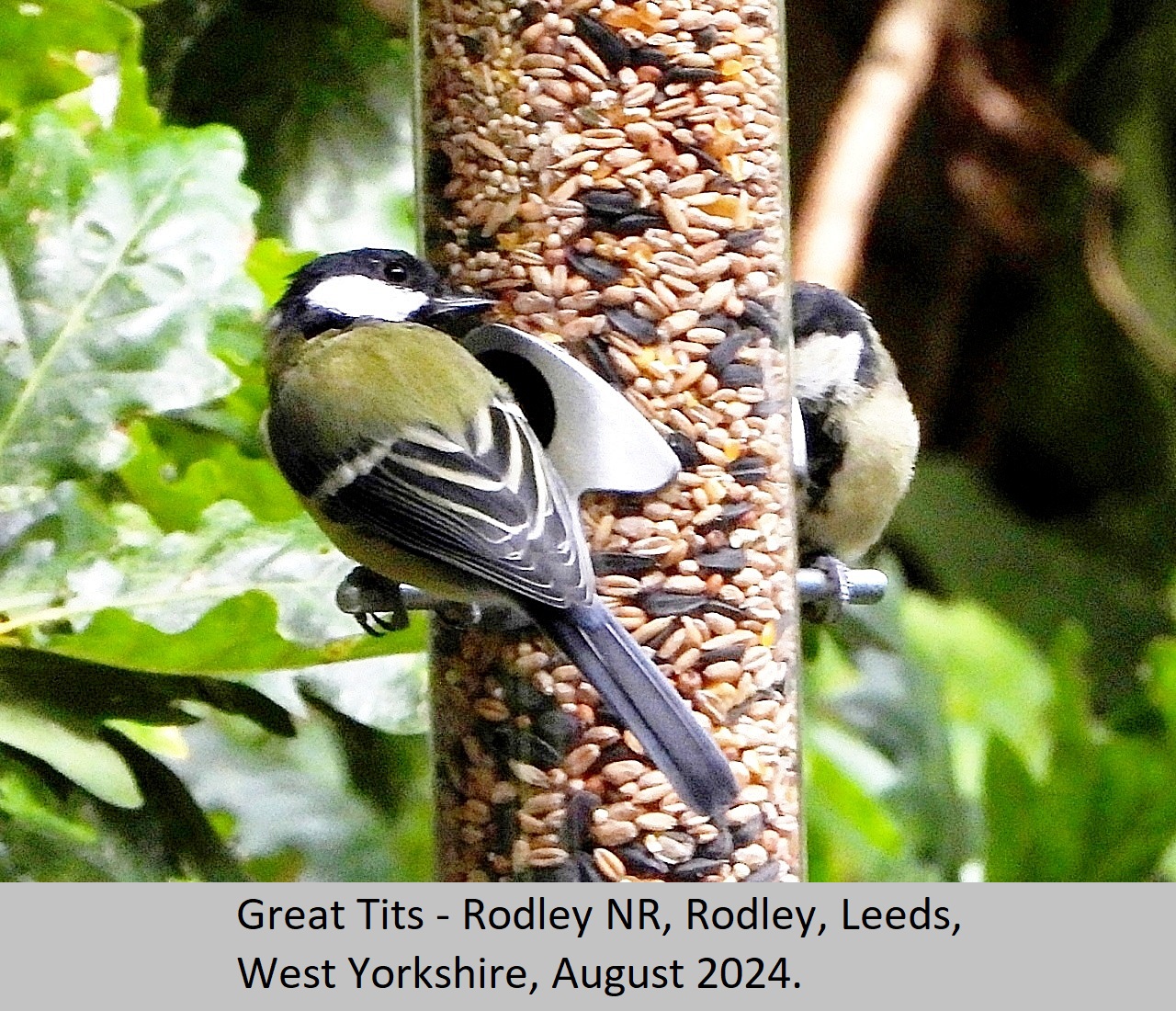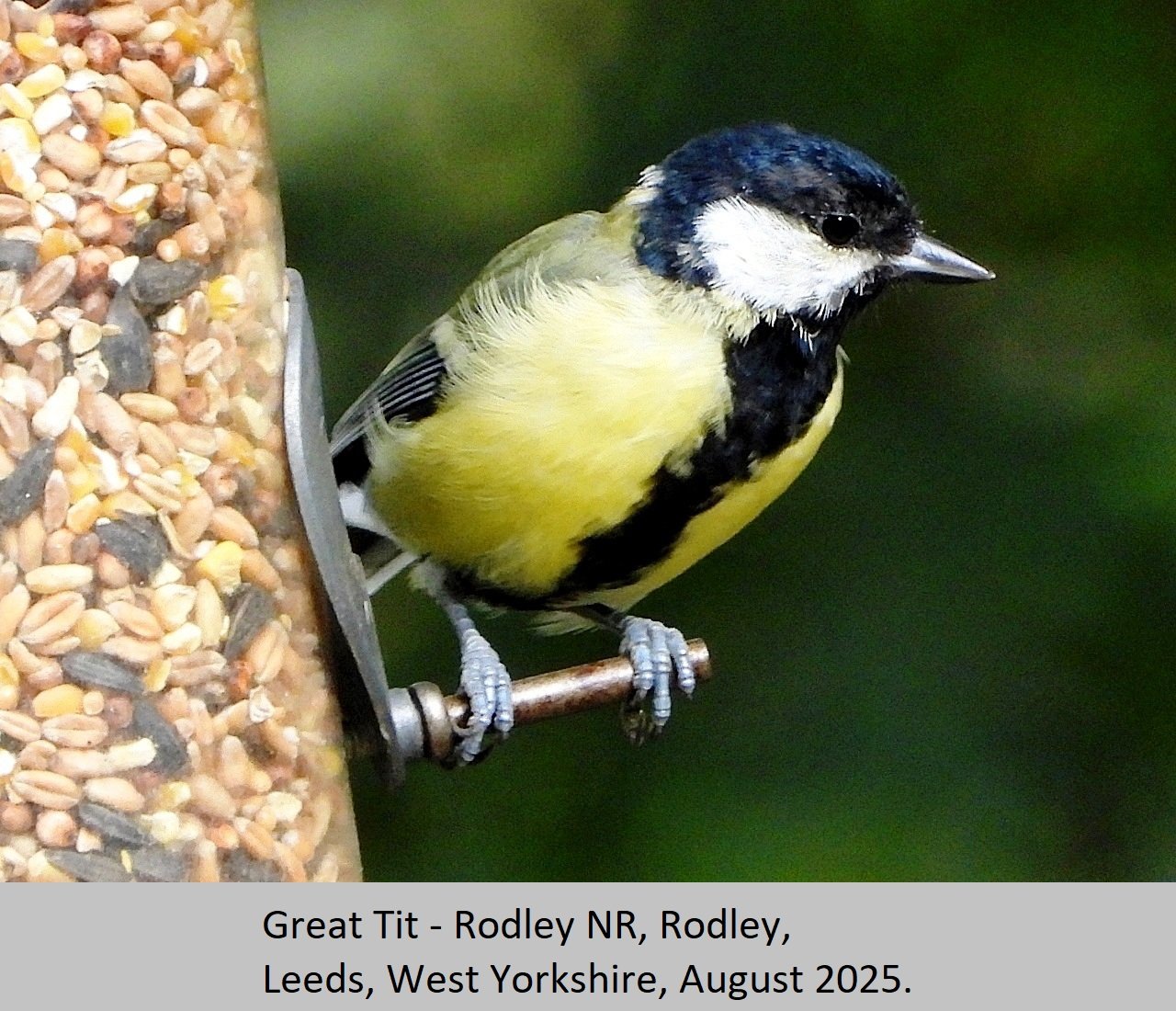![]()
|
|
||||
|
|
|
| (Linnaeus 1758) | (Linnaeus 1758) |
| Passeriformes - Paridae | Passeriformes - Paridae |
| Great Tit - Parus major | Great Tit - Parus major |
 |
 |
| (Linnaeus 1758) | (Linnaeus 1758) |
| Passeriformes - Paridae | Passeriformes - Paridae |
| Great Tit - Parus major | Great Tit - Parus major |
|
Great Tit: UK Status: Resident and native to the British Isles. Habitat: This can be found in parks, gardens, hedgerows and woodland, in fact any where with nesting cavities and a plentiful food supply. They eat insects and seeds. Breeding: Nests are made in tree hollows, gaps and cavities in walls, or rock faces, and nest boxes. The nests are from dried grasses and other plant materials, and are lined with moss, wool, hair and feathers. Females lay about twelve white eggs, spotted with reddish colour per brood, and there is usually two broods each year. Only the female incubates the eggs, both parents however raise their young. Comment: This delightful little bird is well know to humans, even those that live in the cities. Great Tits have adapted well to human habitation, and in fact often benefit from our gaps and cavities that we make in buildings. They often frequent gardens and parks to feast on food left out for them. Similar species are Coal, Marsh and Willow Tits. Similar Species: Coal Tit and Great Tit juveniles, and moulting adults of both species can be difficult to tell apart. However the adult Coal Tit birds are a little easier to identify if you know what to look for. Two of the main differences are they are smaller, and a similar size to Blue Tits. Great tits have a broad dark stripe running vertically from below the neck, down onto their under parts, Coal Tits lack this vertical stripe. Also the back of the Great Tit appears greenish in colouration, where as the back of a Coal Tit has a very greyish appearance.
|
| (Linnaeus 1758) | (Linnaeus 1758) | (Linnaeus 1758) | (Linnaeus 1758) |
| Passeriformes - Paridae | Passeriformes - Paridae | Passeriformes - Paridae | Passeriformes - Paridae |
| Great Tit - Parus major | Great Tit - Parus major | Great Tit - Parus major | Great Tit - Parus major |
|
|
|
|
|
|
|
|
|
|
|
Local Ebird Hotspot - Yeadon Tarn, West Yorkshire Next - More Birds |
|
|
Contact Website Manager dave.hatton29@btinternet.com |
Dave Hatton reserves the copyright on all images. © 2022 |